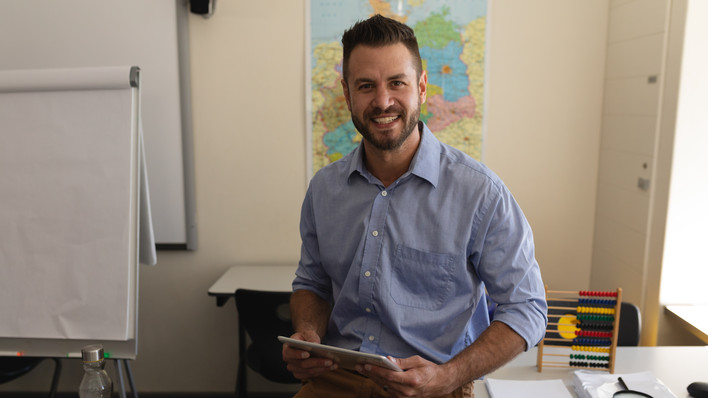Mike Lang and Heidi Carr want teachers to embrace change and look for cutting-edge and tech-savvy ways to connect with and facilitate student learning.
Lang is the chief innovation program officer at ed.Xtraordinary, a program powered by Teach for America that aims to accelerate the pace of innovation among Las Vegas educators. Heidi Carr is an Instructional facilitator at Clark County School District in Nevada. Together they won Best Overall Implementation of Technology at a recent Tech & Learning Regional Leadership Summit in California for their innovative and forward-thinking work in Nevada schools.
They offer strategies for tech-savvy teaching.
1. Tech-Savvy Teaching: Be Open to Change
“Great teachers evolve their practice to reflect the tools at their disposal,” Lang says. “That’s true of anyone who’s ever been a pedagogical solid individual who has the desire to ensure that students are going to be set up so that they can be successful in whatever futures they might choose.”
This is something that has always been true even before new tech tools were as widely available. “Great teachers have been doing this since the beginning of time,” Lang says. In short, remember that tech will never be a substitute for a great teacher.
2. Prioritize Student Voices
“The teachers who are forward-thinking continue to adapt and listen to their students,” Carr says. She adds modern tech tools make running a student-centered classroom easier than ever before. “Our tech allows us to adapt instruction to meet our learner’s needs a lot easier than in the past.”
Lang agrees. “Technology provides a lot more authentic way to allow students to narrate their own journey, and not only narrate their own journey but to present that story to others for feedback and improvement,” he says.
3. Don’t Be Afraid of Technology, But Don’t Blindly Embrace It, Either
ChatGPT and other AI-powered technologies have dominated recent headlines and much of the conversation around education. Lang says educators should stop worrying about it replacing jobs.
“When we get brand new things, people are like, ‘Oh, my God, this is going to replace this…’ We get that coal miner mentality,” he says. Instead, he thinks there’s an opportunity for learning by looking at what the technology can’t do, exploring the mistakes it makes, and understanding its limits.
Carr agrees. “We need to embrace it and use it as a learning tool within our classrooms,” she says.
4. Develop an ‘Operating System’
In order for educators to develop effective tech-savvy and general strategies for education they need an opportunity to test these practices, and to do that requires more standardization of practices, Lang says. Or the development of what he likes to call an operating system.
“Your iPhone does not allow you to customize your OS, everyone’s OS is the same. However, the apps that you can choose are different, even if the operating system is the same,” Lang says.
He compares this concept to the scientific method — no matter how innovative a scientist’s hypothesis is, they’re still going to use the standard scientific method to conduct their experiment. “That standard operating system would allow people to design for variation,” Lang says. “But what happens in schools generally, it’s just variation. And it’s a situation where every teacher is doing their own thing in their classroom with their door closed.”
One area in which Carr would like to see this type of standardization-with-room-for-variation approach implemented is in lesson development.
“I would love for every lesson to go through the design-thinking process for every standard,” she says. “I think if teachers did that, then we would get a lot of bang for our buck.”
This article was written by Erik Ofgang from Tech and Learning and was legally licensed through the Industry Dive Content Marketplace. Please direct all licensing questions to legal@industrydive.com.
![]()



